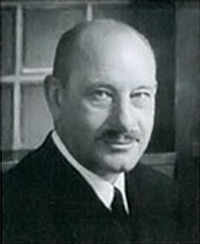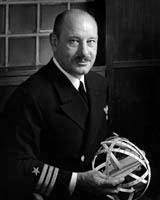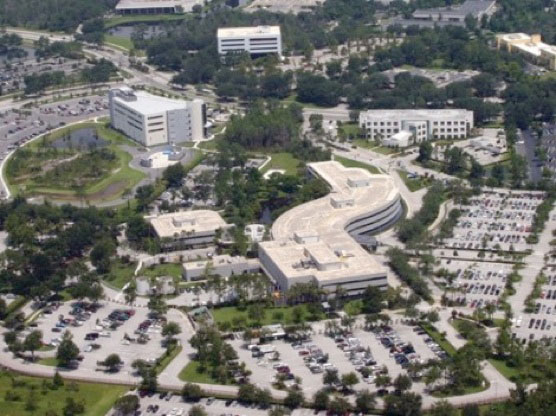Inducted September 2014

In recognition of a lifetime of dedicated service to the nation in training combat pilots, flight crews and other military personnel through the development and deployment of “synthetic devices”. Admiral de Florez established the Navy’s Special Devices Desk during World War II and was influential in the development of early flight and gunnery trainers that proved to be effective in maintaining military readiness.
Luis de Florez was born in New York City. De Florez attendedMIT, and graduated in 1911 with a B.S. in Mechanical Engineering. De Florez worked in the United States Navy as a career officer in World War I. He worked in the aviation section of the Navy and also on the development of refinery technology.

In the 1930s, De Florez also worked as an engineering consultant for various oil companies. His name is on several patents, including a 1918 U.S. patent (#1,264,374) for a “Liquid prism device with rigid closed sides which included a system for varying the density of a medium filling the prism and thereby varying the refraction of light waves passing through the prism, and a 1930 Canadian patent for the “cracking and distillation of hydrocarbon oils”. During World War II, he gave up his business to help solve the Navy’s training problems.
In 1941, then Commander de Florez visited the United Kingdom and wrote what would become an influential report on British aircraft simulator techniques. It influenced the establishing of the Special Devices Division of the Navy’s Bureau of Aeronautics (what would later become theNAWCTSD). Later that year, Commander de Florez became head of the new Special Devices Desk in the Engineering Division of the Navy’s Bureau of Aeronautics. De Florez championed the use of “synthetic training devices” and urged the Navy to undertake development of such devices to increase readiness. He also worked on the development of antisubmarine devices. De Florez has been credited with over sixty inventions.
During World War II, he was subsequently promoted to captain and then to Flag rank, becoming a rear admiral in 1944.In 1944, de Florez was awarded the Robert J. Collier Trophy for 1943 for his work in training combat pilots and flight crews through the development of inexpensive synthetic devices. De Florez was awarded with the Legion of Merit in June 1945. In 1946, Tufts University awarded de Florez an honorary Doctor of Science degree at commencement.
Admiral de Florez was the first director of technical research at the CIA. In the mid-1950s, de Florez was the president of the Flight Safety Foundation. Presented since 1966, the Foundation’s Admiral Luis de Florez Flight Safety Award is named after him. It recognizes “outstanding individual contributions to aviation safety, through basic design, device or practice.” De Florez established a trust to support the award that provides each recipient with $1,000.Luis de Florez died in November 1962, at the age of 73 in the cockpit of his airplane, which was ready for take-off at a Connecticut airport. The main building complex at the Naval Air Warfare Center Training Systems Division, Naval Support Activity Orlando, Florida, is named in his honor.
In 1944, de Florez was awarded the Robert J. Collier Trophy for 1943 for his work in training combat pilots and flight crews through the development of inexpensive synthetic devices. De Florez was awarded with the Legion of Merit in June 1945. In 1946, Tufts University awarded de Florez an honorary Doctor of Science degree at commencement. Adm deFlorez was awarded an honorary doctorate from Rollins College, Winter Park, Florida.

Luis de Florez was actively involved in experimental aerospace development projects for the United States Government. As both an active duty and a retired U.S. Navy Admiral, de Florez was influential in the development of early flight simulators, and was a pioneer in the use of “virtual reality” to simulate flight and combat situations in World War II.
In 1941, then Commander de Florez visited the United Kingdom and wrote what would become an influential report on British aircraft simulator techniques. It influenced the establishing of the Special Devices Division of the Navy’s Bureau of Aeronautics (what would later become theNAWCTSD). Later that year, Commander de Florez became head of the new Special Devices Desk in the Engineering Division of the Navy’s Bureau of Aeronautics. De Florez championed the use of “synthetic training devices” and urged the Navy to undertake development of such devices to increase readiness. He also worked on the development of antisubmarine devices. De Florez has been credited with over sixty inventions.
Simulators have widespread use today: military, medical, transportation ,entertainment, law enforcement, education and other applications in analysis and test and evaluation. Modeling and Simulation has been named a National Critical Technology
A visionary, Adm deFlorez had the foresight to understand the contribution of simulators in training pilots to gain air superiority in World War II. Further, he had the resolve to build an organization that would study and produce simulators to satisfy a critical need.
In Orlando, Florida, the centerpiece of what is described as “Team Orlando”, the military organizations procuring training devices for the services are located in the deFlorez complex, named after the admiral who began it all during World War II.
